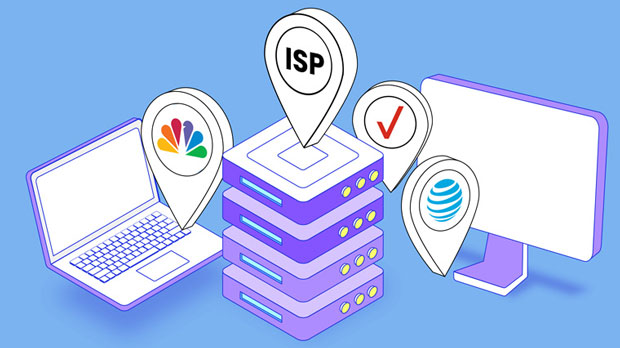When working with web scraping or automation tasks, such as those carried out by Selenium, one of the main challenges is avoiding IP bans or detection. Websites often limit the number of requests or actions from a single IP address, which can be a problem for users relying on Selenium. To overcome this, dynamic ip proxies are used to rotate IP addresses and make requests seem as if they are coming from different locations, effectively preventing bans. In this article, we will explore how to implement automatic IP rotation in Selenium using dynamic proxies. We will break down the process into easy-to-understand steps, offering practical insights for those looking to integrate this solution into their Selenium projects. What Are Dynamic IP Proxies?Dynamic IP proxies refer to proxy servers that provide a constantly changing IP address for each connection. Unlike static IP proxies, which always use the same IP, dynamic IP proxies switch between different IPs automatically, making it much harder for websites to track or block the source of requests. This technique is commonly used in web scraping, where repeated requests to a website from the same IP might trigger anti-bot mechanisms. By rotating the IP addresses, you can simulate requests from multiple users, thereby avoiding detection.Why Use Dynamic IP Proxies in Selenium?Selenium is a popular tool for automating browsers, often used for scraping or testing web applications. However, websites use various techniques, such as rate-limiting and IP blocking, to prevent automated interactions. When using Selenium without IP rotation, scraping or automation tasks may fail due to these blocks. Dynamic IP proxies solve this problem by constantly changing the IP address, preventing your Selenium script from hitting the same IP limit repeatedly. This allows for uninterrupted access to websites, making it a key component for efficient and scalable web scraping or automation.Setting Up Dynamic ip proxy Rotation in SeleniumTo integrate dynamic IP proxies into Selenium, you first need to acquire a proxy provider that supports IP rotation. Once you have a list of dynamic proxies, here’s a breakdown of how to set up automatic IP switching:Step 1: Install Necessary LibrariesBefore integrating proxies into your Selenium project, you need to install the required libraries. You can do this using pip. First, ensure you have Selenium installed, and then add any additional packages for proxy management if needed.```bashpip install seleniumpip install requests```Step 2: Configure Your WebDriver to Use ProxiesSelenium WebDriver supports proxy configuration. To use dynamic proxies, you need to configure the WebDriver to route requests through the proxy. Below is an PYPROXY of how to set up a basic proxy with Selenium using Python:```pythonfrom selenium import webdriverfrom selenium.webdriver.common.proxy import Proxy, ProxyTypeproxy_ip = "your_proxy_ip"proxy_port = "your_proxy_port" Setting up the proxyproxy = Proxy()proxy.proxy_type = ProxyType.MANUALproxy.http_proxy = f"{proxy_ip}:{proxy_port}"proxy.ssl_proxy = f"{proxy_ip}:{proxy_port}" Applying the proxy settings to the WebDrivercapabilities = webdriver.DesiredCapabilities.CHROMEproxy.add_to_capabilities(capabilities)driver = webdriver.Chrome(desired_capabilities=capabilities)driver.get("http://www.pyproxy.com")```This code sets up the proxy for the Selenium WebDriver, routing traffic through the proxy server.Step 3: Implement IP Rotation LogicTo automatically rotate IPs, you will need a strategy for switching proxies after each request or after a set amount of time. You can achieve this by maintaining a list of proxies and selecting a new one for each request. Here's a simplified approach:```pythonimport randomproxy_list = [ "proxy1_ip:port", "proxy2_ip:port", "proxy3_ip:port", Add more proxies here]def get_new_proxy(): return random.choice(proxy_list)def set_proxy_for_driver(driver): new_proxy = get_new_proxy() proxy = Proxy() proxy.proxy_type = ProxyType.MANUAL proxy.http_proxy = new_proxy proxy.ssl_proxy = new_proxy capabilities = webdriver.DesiredCapabilities.CHROME proxy.add_to_capabilities(capabilities) driver.quit() driver = webdriver.Chrome(desired_capabilities=capabilities) return driver Usagedriver = webdriver.Chrome()driver.get("http://www.pyproxy.com") After some actions, change the proxydriver = set_proxy_for_driver(driver)driver.get("http://www.pyproxy.com")```In this pyproxy, the `get_new_proxy()` function picks a new proxy from a list, and the `set_proxy_for_driver()` function applies the new proxy to the WebDriver instance.Step 4: Handling Proxy Authentication (Optional)Some proxy providers require authentication before they allow connections. If your dynamic IP proxies require credentials, you can add them to your Selenium configuration. Here’s how you can pass authentication details:```pythonfrom selenium.webdriver.common.by import Byfrom selenium.webdriver.common.keys import Keysimport timedef authenticate_proxy(driver, proxy_username, proxy_password): Open the proxy authentication dialog (this depends on your browser's behavior) driver.get("http://pyproxy.com") Use the appropriate method for your browser to enter authentication details username_field = driver.find_element(By.NAME, "username") password_field = driver.find_element(By.NAME, "password") username_field.send_keys(proxy_username) password_field.send_keys(proxy_password) password_field.send_keys(Keys.RETURN) time.sleep(3) Wait for authentication to complete return driver Usageproxy_username = "your_username"proxy_password = "your_password"driver = authenticate_proxy(driver, proxy_username, proxy_password)```Step 5: Handle Potential Errors and FailuresWhen using dynamic IP proxies, it’s essential to handle potential errors, such as invalid proxies, connection failures, or timeouts. Implementing retries and fallback mechanisms is crucial for robustness:```pythonimport timedef retry_on_failure(func, retries=3): for i in range(retries): try: return func() except Exception as e: print(f"Error: {e}, retrying... ({i + 1}/{retries})") time.sleep(5) raise Exception("Failed after multiple retries")```This function retries a failed operation up to three times before raising an exception, ensuring your script doesn’t crash when encountering temporary issues with proxies.ConclusionIntegrating dynamic IP proxies into Selenium is an effective way to avoid detection and IP bans during web scraping or automated browsing. By setting up a proxy rotation system, you can ensure that each request appears to come from a different IP, making it much harder for websites to block or throttle your script. Although the setup process requires careful configuration and testing, once implemented, it greatly enhances the reliability and scalability of your Selenium-based automation tasks. Whether you’re scraping large volumes of data or performing repetitive testing tasks, dynamic IP proxies can help keep your Selenium script running smoothly.
Jun 26, 2025






















































